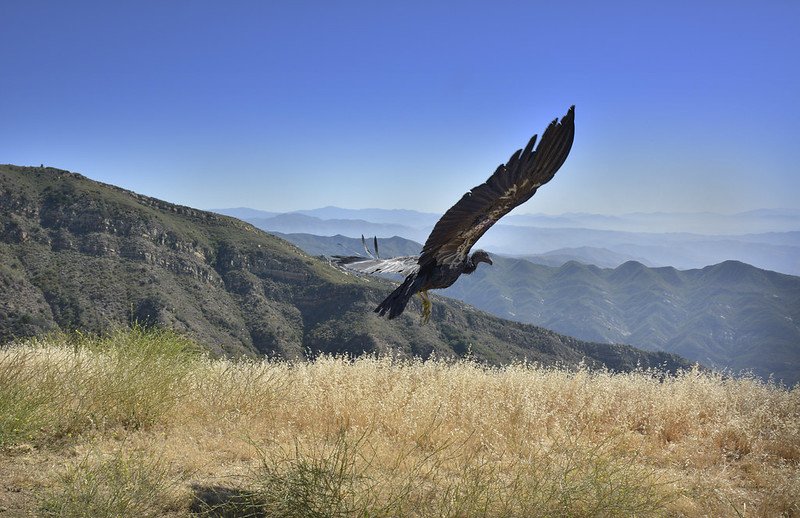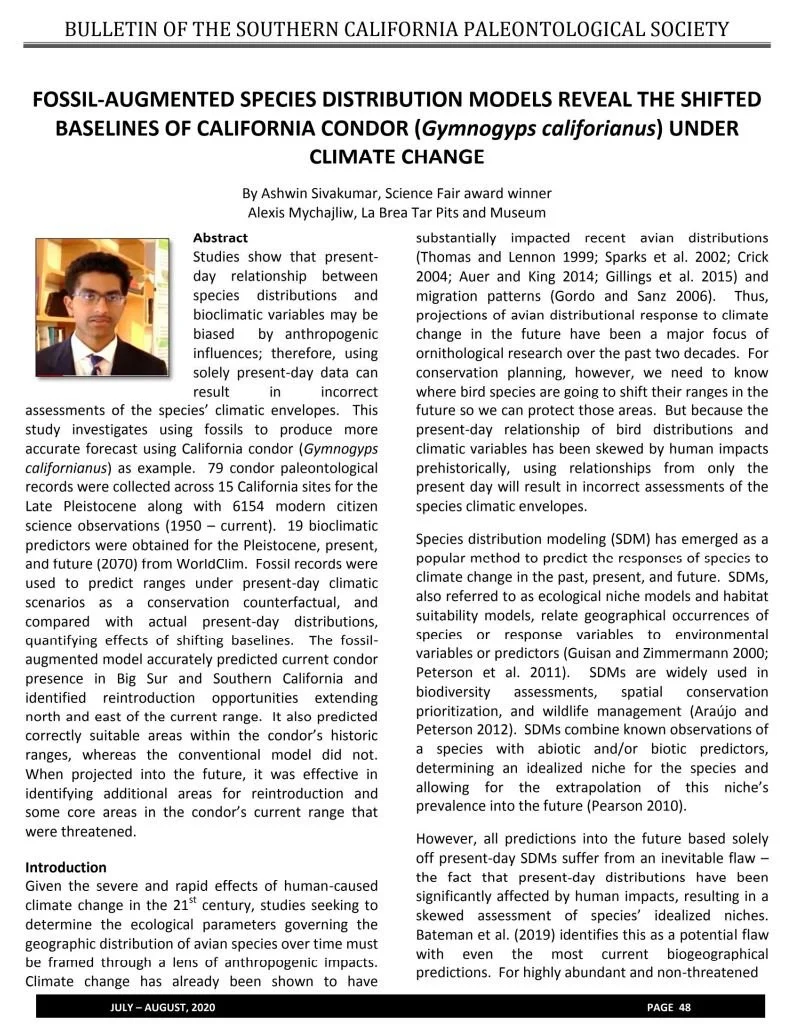
California Condor Habitats Under Climate Change
Fossil-augmented species distribution models reveal the shifted baselines of California Condor (Gymnogyps Californianus) under climate change
Sivakumar, Ashwin, and Alexis Mychajliw. “Fossil-augmented species distribution models reveal the shifted baselines of California Condor (Gymnogyps Californianus) under climate change.” Bulletin of the Southern California Paleontological Society, Aug. 2020, pp. 48–55.
Abstract
Fossil-Augmented Species Distribution Models Reveal the Shifted Baselines of California condor (Gymnogyps californianus) under Climate Change
Ashwin Sivakumar and Alexis Mychajliw
Climate change threatens to alter distributions of numerous bird species. While predicting future distributional changes due to climate is critical in guiding management efforts, studies show that present-day relationship between species occurrences and bioclimatic variables may be biased by anthropogenic influences; therefore, using solely present-day data can result in
incorrect assessments of the species’ climatic envelopes. This study investigates using fossils to produce more accurate forecasts using California condor (Gymnogyps californianus) as example. 79 condor paleontological records were collected across 15 California sites for the Late Pleistocene period along with 6154 modern citizen science observations (1950-current). 19 bioclimatic predictors were obtained for the Pleistocene, present, and future (2070) from WorldClim. Fossil records were used to predict ranges under present-day climatic scenarios as a conservation counterfactual, and compared with actual present-day distributions, quantifying effects of shifting baselines. The fossil-augmented model with test Area under the Receiver Operating Curve scores of 0.89 and 0.94 for two algorithms used accurately predicted current condor presence in Big Sur and Southern California and identified colonization opportunities extending north and east of the current range. It also predicted correctly suitable areas within the condor’s historic ranges, whereas the conventional model did not. When projected into the future, it was effective in identifying additional areas for colonization and some core areas in the condor’s current range that were threatened. We highlight opportunities for interdisciplinary collaboration and advocate for the
integration of datasets from the Pleistocene and Holocene to meet the conservation challenges of the Anthropocene.
